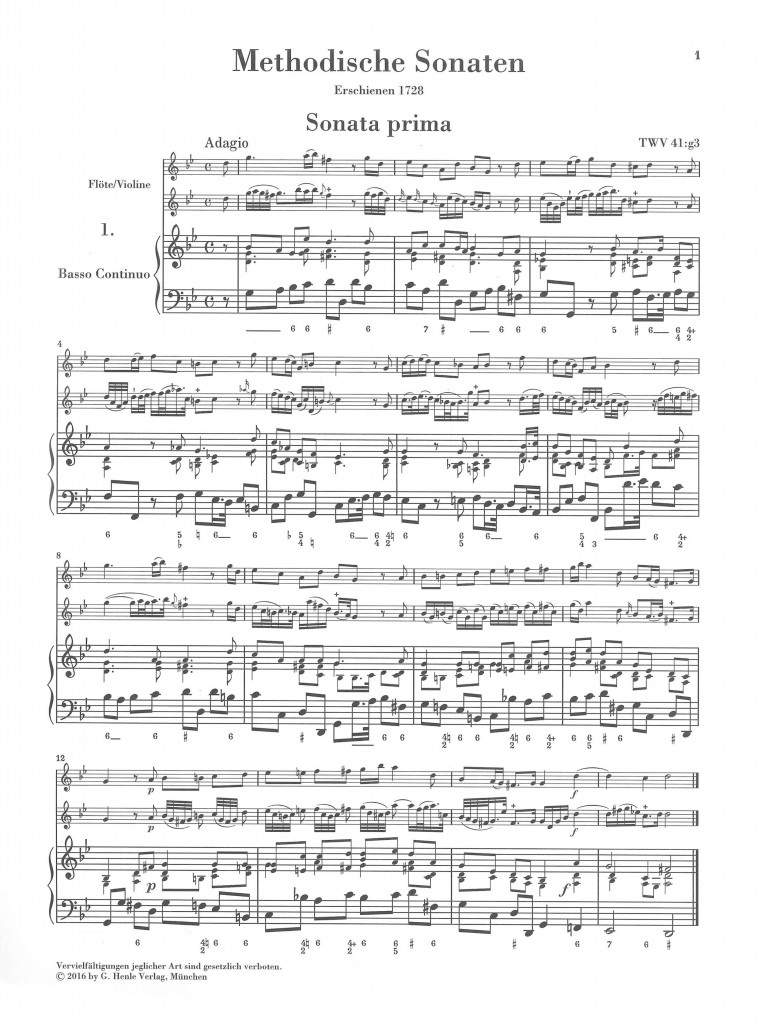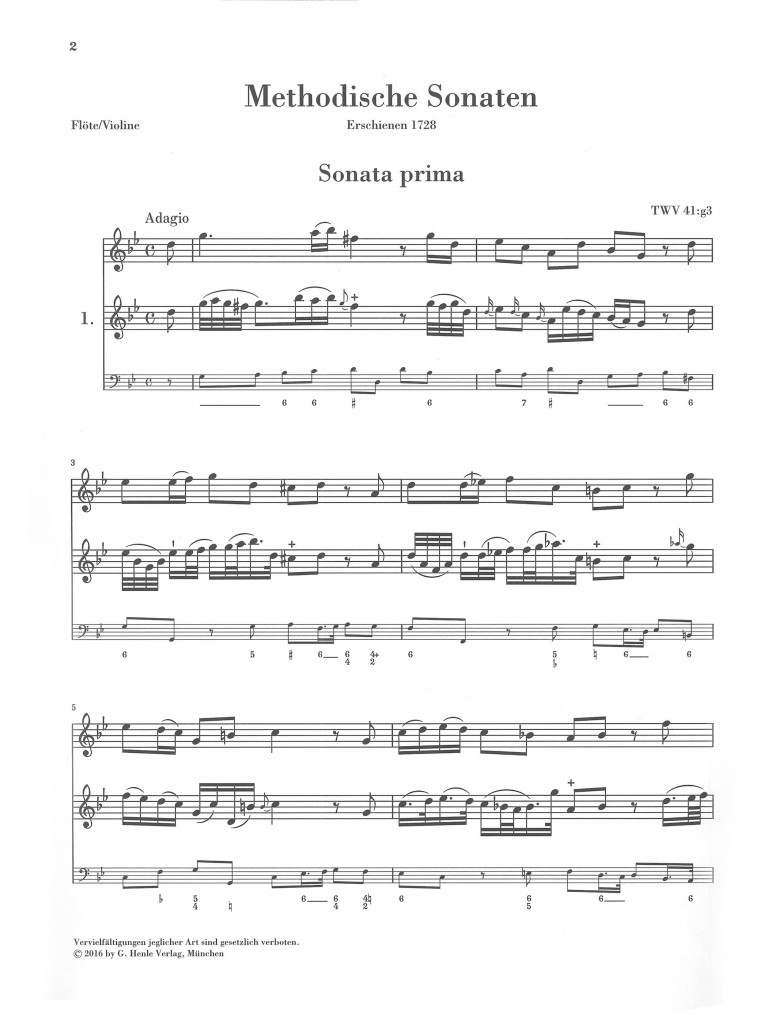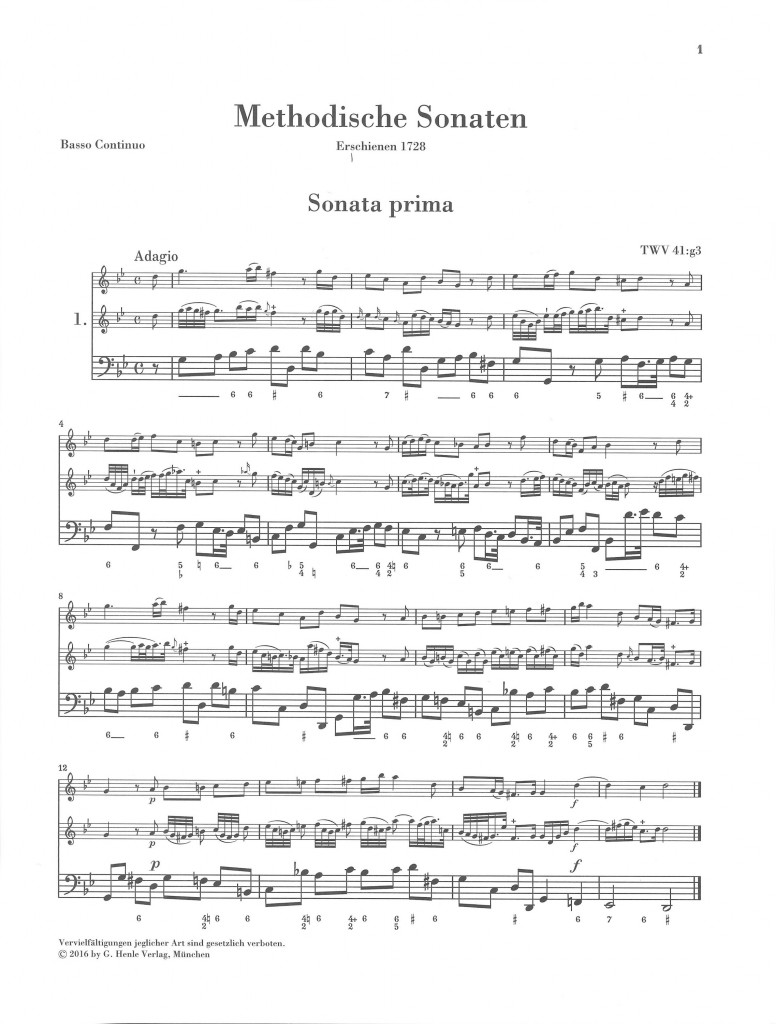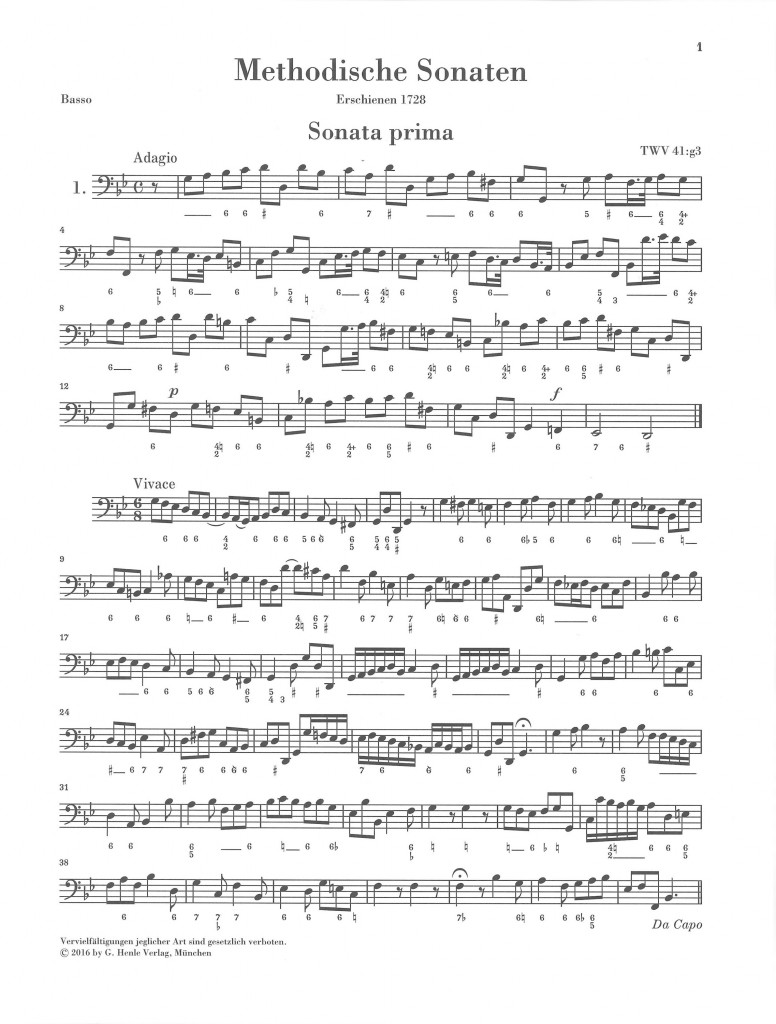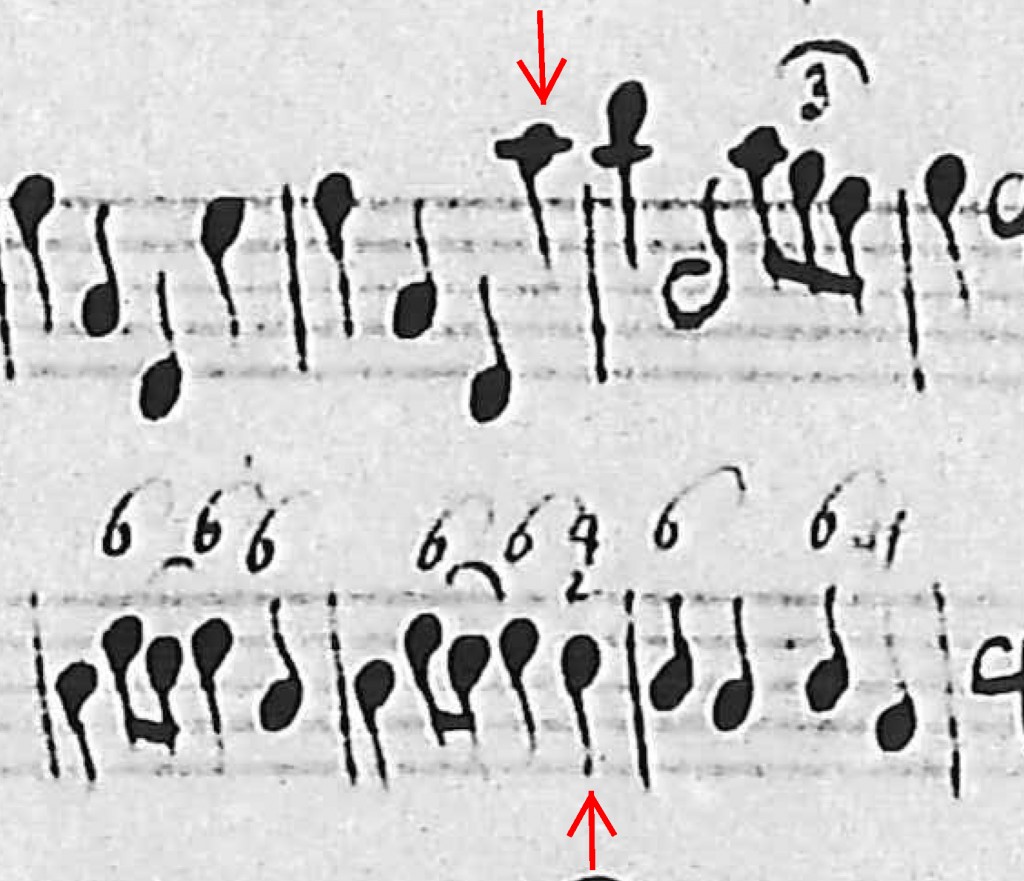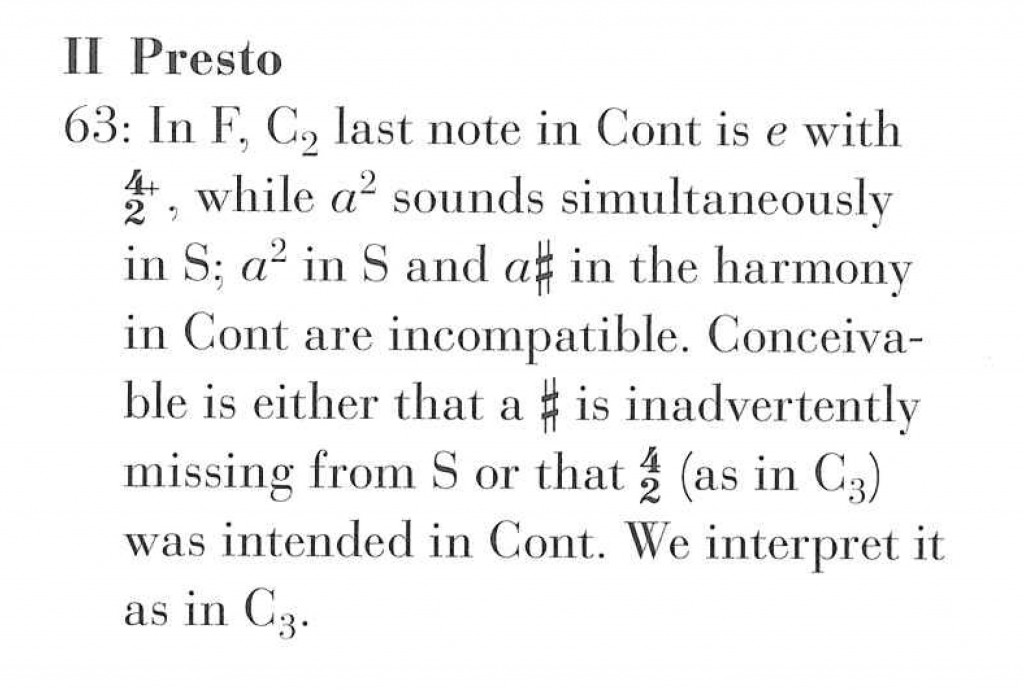 It was nearly three years ago, on 17 February 2014, that my blog post on a luxuriously appointed Henle Urtext edition of Bach’s Trio Sonata BWV 1038 appeared. At that time I wrote that we are upgrading reprints of baroque chamber music in order to outfit them also with a continuo score, added bass part, etc. What was not mentioned in this post, but actually taken for granted is: New editions scored with continuo are likewise opulently equipped. Another such deluxe edition has appeared recently, to which I’d like to refer here: Telemann’s Methodical Sonatas, Part I, with sonatas 1–6 (HN 1266).
It was nearly three years ago, on 17 February 2014, that my blog post on a luxuriously appointed Henle Urtext edition of Bach’s Trio Sonata BWV 1038 appeared. At that time I wrote that we are upgrading reprints of baroque chamber music in order to outfit them also with a continuo score, added bass part, etc. What was not mentioned in this post, but actually taken for granted is: New editions scored with continuo are likewise opulently equipped. Another such deluxe edition has appeared recently, to which I’d like to refer here: Telemann’s Methodical Sonatas, Part I, with sonatas 1–6 (HN 1266).
Our decision about the volume’s contents will already feature something special that will please many musicians. For the first time all 12 sonatas are available in only two volumes (part II with sonatas 7–12 will come out by the middle of 2017). This two-part design is not only more practical than the previous editions available in 4 or 6 volumes, but it also follows the source tradition. For in 1728 Telemann initially published sonatas 1–6 under the Italian title “Sonate metodiche” and probably encouraged by this collection’s great success followed it up with another six sonatas, this time under the French title “Continuation des Sonates méthodiques”. The two groups of six sonatas each were thus absolutely conceived by Teleman as two separate units, just like our edition.
We are putting everything into the outfitting here. The “keyboard” score with the thorough bass realized in small print and parallel solo part (in ornamented and unornamented form appropriate to the first movements in the source), encloses three books of parts:
- Solo part, with the parallel basso continuo in small print. This is important for those flutists and violinists wanting to ornament and desiring to see the harmonic progressions for doing so.
- Basso-continuo part, parallel to the solo part. Continuo players wishing to improvise the thorough bass can follow the solo part on this foundation.
- Bass part with thorough-bass figures. This is also informative in style-conscious performance for the bass part played, for instance, by a cellist wanting to follow the harmonic events.
Click to enlarge
Notational characteristics and their meaning for performance practice are explained by the editor and early-music specialist Wolfgang Kostujak in a section, “Comments on Performance Practice”. Now then, after this bird’s-eye view, here are just a couple more words on the new Henle edition of the Methodical Sonatas. The source tradition is a stroke of luck. Telemann not only authorized the first edition (as in the best case can be said of several composers) – he was even responsible for producing it at all stages. He evidently personally engraved the music text, publishing and distributing it himself. Then there is the exceptional care that he exercised in the engraving. So, the first edition not only claims ultimate authority but is so reliable as to leave hardly anything to be desired.
There are contradictions in the music text in a very few spots, such as, for instance, in Sonata quarta, 2nd movement (Presto), m. 63. Here Telemann notates an a2 as the final note of the solo part. The thorough-bass figuration gives, on the other hand, a 2 and a 4+ under e in the bass, resulting in a harmony with f sharp and a sharp, a sharp in the continuo against a in the solo part. Did Telemann forget to put the sharp accidental before a2 in the solo part, thus really meaning a sharp2? Or did an error creep in while engraving the thorough-bass figuration and it should actually be 4 instead of 4+ there? Deciding this is difficult because both readings are conceivable.
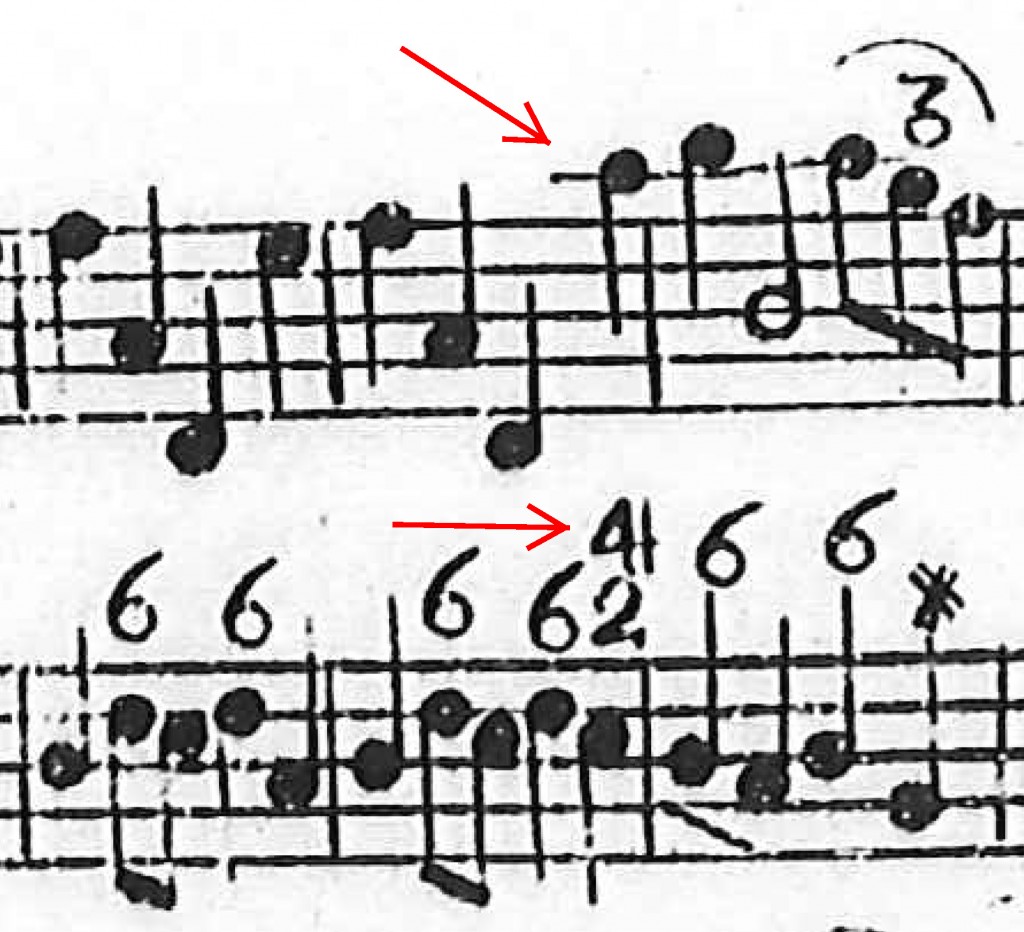
Telemann, Methodical Sonatas, Vol. I, Sonata quarta, TWV 41:D3, 3rd movement, First edition (mm. 63-64)

Telemann, Methodical Sonatas, Vol. I, Sonata quarta, TWV 41:D3, 3rd movement, Henle edition (mm. 60-65). Click to enlarge.
Two additional sources besides the authorized first edition were available to the editor of our edition in these admittedly rare cases where the authorized text is in doubt. They are contemporary copies (sigla C2 and C3, see the Comments, page 62 ff.), though whether they are associated with the composer is not clear. In the first movements they show no ornamented versions of the solo part and hence omit that aspect of the collection first making the sonatas “methodical” (see on this the editorial preface, page VI). The differences from the first edition raise the question as to whether the copyists intervened independently in the music text, or whether available to them was a model (an “early version”?) that can be traced back to the composer himself. We can’t give you a definite answer to this question. In view of the first edition’s authority, however, it seemed to us impossible to consider the copies as sources for the edition. Nevertheless, since now and then they do offer interesting evidence of how Telemann’s contemporaries dealt with the first edition’s contradictions at a few spots, they are therefore consulted on occasion – thus also concerning the textual question introduced above.
In copy C3 the copyist decided to adapt the thorough-bass figuration to the solo part, thus writing 4 instead 4+
This finding has also encouraged our editor to decide to edit it as a2 and 4. As shown above, however, this intervention in the text of the first edition is made transparent with a footnote and corresponding comment.
How would you have decided? Write us and let us know!

